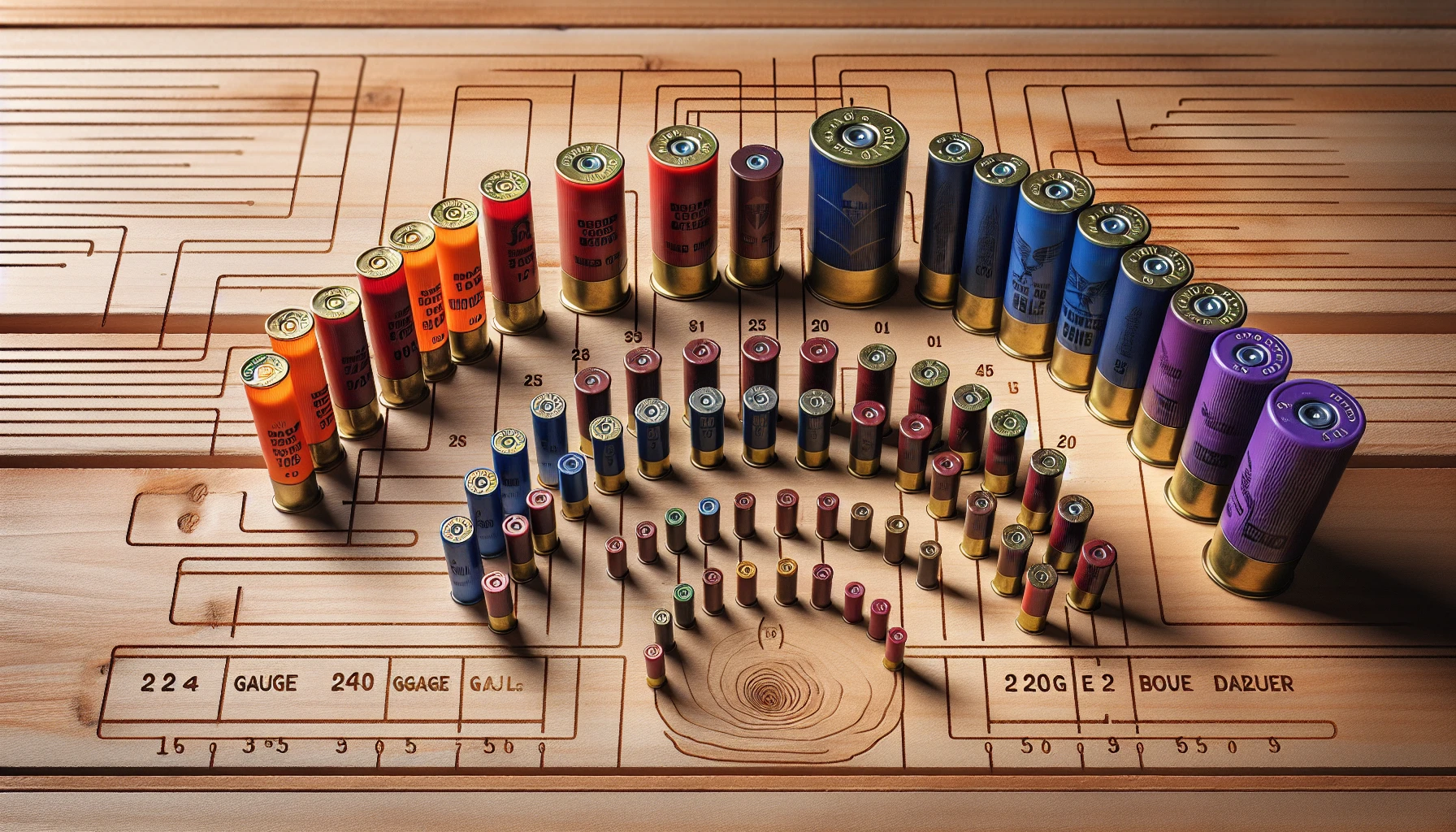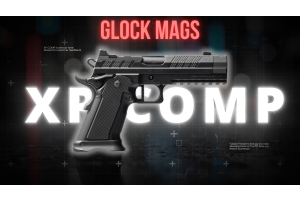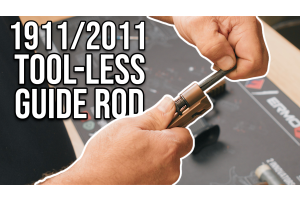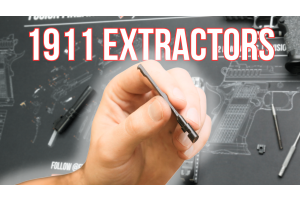12 Gauge vs 20 Gauge for Home Defense: Making the Right Shotgun Choice
0%

When it comes to home defense, choosing the right shotgun gauge can be critical. The debate between using a 12 gauge versus a 20 gauge shotgun, or “12 gauge vs 20 gauge for home defense,” is about balance—power against recoil and ease of handling. This article dives into the practical aspects of both gauges to help you make an informed decision for your home defense needs.
Key Takeaways
-
When choosing between 12 gauge and 20 gauge shotguns for home defense, consider the 12 gauge for larger payloads and greater stopping power, but with significantly more recoil, or the 20 gauge for easier handling and less recoil, suitable for those with less strength or experience.
-
Effective recoil management is critical for accurate follow-up shots in home defense situations and involves using recoil pads, choosing the proper stance, and practicing regularly to build muscle memory.
-
It’s important to select the right home defense ammunition, considering buckshot for closer encounters but being aware of the potential for overpenetration with slugs, and to enhance a shotgun’s effectiveness with various accessories and modifications while prioritizing safety.
Understanding Shotgun Gauges
The diameter of a shotgun’s bore, also known as the shotgun gauge, is a crucial factor in determining the appropriate shotgun for home defense. The most common shotgun gauges include:
-
10 gauge
-
12 gauge
-
16 gauge
-
20 gauge
-
28 gauge
-
.410 bore
The difference in shotgun’s bore diameter is the main distinguishing feature between a 12 gauge shotgun and a 20 gauge shotgun. A 12 gauge has a bore diameter of 0.729”, while a 20 gauge has a bore diameter of 0.615”. This difference in bore size has implications on the firing capabilities of each shotgun. The larger bore of the 12 gauge allows it to fire bigger buckshot payloads at a higher speed, though this does result in greater felt recoil.
The increased recoil might deter certain individuals, especially those who lack physical strength or shooting experience. On the other hand, the 20 gauge shotgun, with its smaller bore, tends to have less recoil, making it a potentially better choice for those who prioritize ease of handling and control.
Recoil Comparison: 12 Gauge vs. 20 Gauge
Given the larger size and power of its ammunition, a 12-gauge shotgun tends to generate more recoil than a 20-gauge shotgun. On average, the recoil produced by a 12-gauge shotgun load is 40-60% more than that of a 20-gauge shotgun load, assuming all other factors are equal. This recoil can vary based on:
-
the ammunition velocity
-
the overall weight of the gun
-
the barrel length
-
the stock fit
-
the shooter’s technique.
The 12-gauge can send a greater number of projectiles downrange, potentially improving the likelihood of hitting a target. However, the 20-gauge’s lighter weight and reduced recoil may allow for faster, more accurate follow-up shots. This makes a 20-gauge shotgun, with its lower recoil compared to the 12-gauge shotgun, a viable option for home defense, especially for individuals with lower physical strength.
To put it in perspective, the recoil difference is not just about the discomfort experienced by the shooter. It significantly affects the shooter’s ability to manage the shotgun, maintain accurate aim, and deliver effective shot placement. A high recoil can make these aspects more challenging, especially for new or inexperienced shooters.
Recoil Management Techniques
Recoil management is crucial for effective shooting, especially in self-defense situations where accurate follow-up shots may be necessary. One way to manage shotgun recoil is by using recoil pads and recoil-reducing devices. These play a significant role in managing shotgun recoil by absorbing some of the energy when a shot is fired. This not only improves comfort for the shooter but also decreases the amount of felt recoil, making it easier to maintain control and accuracy with subsequent shots.
Another key aspect of recoil management is maintaining a proper shooting stance. This includes:
-
Having a secure grip on the shotgun
-
Firmly pressing the stock against the shoulder
-
Leaning slightly forward to distribute recoil force
-
Keeping the body relaxed to absorb the recoil with the entire body
This stance is essential not only for home defense but also for other shooting scenarios, such as upland bird hunting and deer hunting.
It’s also important to remember that correct recoil management doesn’t just happen in the heat of the moment. Regular practice is necessary to build muscle memory and ensure you can handle the recoil effectively under stress. So, don’t neglect those practice sessions!
Home Defense Ammunition Options
Opting for the correct ammunition, such as shotgun shells, enhances the effectiveness of your home defense shotgun. The recommended types of shotgun ammunition for home defense are buckshot, birdshot, and slugs. Each of these options has its pros and cons, and the best choice depends on your specific needs and situation.
Buckshot loads are highly effective in close-range defense scenarios. Options like No. 1 buckshot provide consistent penetration, good patterning, and less recoil compared to larger sizes like 00 buckshot, which contains smaller buck pellets. Birdshot, on the other hand, is ideal for target shooting due to its spread pattern.
Slug ammunition, while powerful, has the potential to cause overpenetration in a home defense situation, unlike buckshot and birdshot. It offers greater impact, but it may lead to excessive damage in close-range encounters by passing through the target and causing unintended harm. However, Federal 8 pellet FLITECONTROL 00 buck or Winchester PDX1 Defender is recommended for home defense as they offer a balance between effectiveness and safety by minimizing the risk of penetrating through walls and hitting unintended targets.
Shotgun Versatility: Adapting to Your Needs
Shotguns, adaptable and versatile, can be tailored for numerous uses. The 12 gauge shotgun, for instance, is capable of serving as:
-
a low-recoil double gun
-
a high-power waterfowl and turkey gun
-
a slug gun for big game
-
a tactical shotgun for self-defense
Additionally, the adaptability of the shotgun can be further enhanced through modifications such as sights, light gun accessories like lights, and stocks.
A 20 gauge shotgun also offers a wealth of customization options to cater to different needs. These can involve:
-
Using shell shrinkers to fit smaller gauge cartridges
-
Adding magazine extension tubes to increase ammunition capacity and shot count
-
Utilizing various firearm accessories to enhance versatility
-
Changing the barrel
-
Modifying the choke
-
Upgrading the stock and forend
These modifications can be made to adapt to different shooting scenarios, including the use of a pistol caliber carbine.
If you are contemplating between a 12 gauge and a 20 gauge shotgun for home defense, comprehending your unique needs and customizing the shotgun accordingly is vital. From choosing the right ammunition to adding the right accessories, every decision you make should be geared toward creating a shotgun that is effective, comfortable to use, and suits your home defense strategy.
Handling and Control: Which Shotgun is Easier to Use?
When selecting a shotgun for home defense, handling and control are critical aspects to take into account. The weight disparity between a 12-gauge and a 20-gauge shotgun can impact handling, particularly for individuals with lower physical strength, as the 12-gauge shotgun tends to be heavier. As such, the 20-gauge shotgun is often preferred for hunting upland game birds due to its lighter weight and easier handling.
Recoil also has a significant impact on the handling and control of a shotgun. A denser shot pattern can be affected by recoil, making it essential to choose the right shotgun for home defense. The 20 gauge shotgun offers advantages such as being lighter, having less recoil, and being more compact, which makes it easier to handle and control, particularly beneficial for smaller-framed individuals or those with less shooting experience.
Improving shotgun handling in a home defense situation is influenced by factors such as:
-
Having a proper stock length and fit
-
Regular practice
-
Controlled movements
-
Adherence to safety protocols
-
Selecting the appropriate ammunition for the situation
All these factors contribute to ensuring you can effectively use your shotgun when you need it the most.
Penetration and Stopping Power
Penetration and stopping power are other significant factors to weigh when choosing between a 12 gauge and a 20 gauge shotgun for home defense. The 12 gauge shotgun is known for its significant penetration power, particularly with shotgun slugs, and generally surpasses the penetration power of a 20 gauge shotgun.
In terms of stopping power, the 20-gauge shotgun is capable of providing ample stopping power, similar to a 12-gauge load recommended for home defense. However, it is important to note that a 12-gauge shotgun typically has more stopping power than a 20-gauge shotgun.
These factors are crucial in a home defense scenario where stopping a threat effectively and quickly is paramount. Shotguns, especially 12-gauge with buckshot and slugs, possess excellent stopping power and can penetrate deeply enough to effectively halt a threat. However, it’s essential to balance this with the risk of overpenetration, which can potentially harm innocent bystanders or cause unnecessary property damage.
Choosing the Right Shotgun for Your Home Defense Situation
Selection of the ideal shotgun for home defense necessitates the evaluation of various factors. User experience, which considers ammo capacity and versatility, and physical ability, as shotguns can be large and heavy, are among the factors that influence the selection of a shotgun for home defense.
If you’re new to using shotguns, some suitable options for home defense include:
-
Mossberg 500 Series
-
Mossberg 590
-
Kel-Tec KSG
-
Smith & Wesson M&P 12
-
Remington Model 870
These options are known for their reliability and ease of use.
The intended use of the shotgun also plays a significant role in determining the most suitable option. Shotguns are adaptable tools with various potential uses, including shorter-distance defensive scenarios, hunting, and property protection. Therefore, it’s essential to select a shotgun that aligns with the specific needs of the user, striking a balance between home defense capabilities and other potential uses.
Accessories and Modifications for Home Defense Shotguns
Effectiveness of shotguns for home defense can be significantly boosted with accessories and modifications. Recommended accessories for home defense shotguns include:
-
Quality ammunition
-
Side saddle
-
Stock shell holder
-
Shorter stock
-
Weapon mounted light
-
Sling
-
Improved sights
-
Extended magazine tube
-
Receiver-mounted ammunition holder
-
Pistol grip
-
Recoil pad
Modifying your shotgun can also improve its effectiveness. This can include:
-
Using improved-cylinder or modified chokes to tighten patterns and extend the effective range
-
Ensuring the shotgun fits the user properly
-
Modifying the stock for better usability and maneuverability
-
Backboring the barrel to increase the internal diameter for better shot patterns
Improved sights, like rifle sights/ghost rings or red dot sights, provide faster target acquisition, easier aiming, and increased accuracy, which are essential advantages at home defense distances. Extending the magazine can also increase your shot count, giving you more chances to stop a threat.
Remember, every accessory or modification should improve your shotgun’s effectiveness in a home defense scenario and match your specific needs and capabilities.
Safety Considerations for Using Shotguns in Home Defense
Emphasizing safety is fundamental when utilizing shotguns for home defense. Here are some important safety measures to follow:
-
Keep the gun unloaded and locked when not in use.
-
Know how to safely open and close the action and remove ammunition.
-
Practice safe muzzle control by keeping the shotgun pointed in a safe direction at all times.
In a home defense situation, it’s crucial to handle the shotgun with the highest level of care for personal protection. This includes always keeping the shotgun pointed in a safe direction, away from loved ones, even when navigating stairs or inspecting dark rooms.
While it’s important to be ready to use your shotgun effectively in a home defense situation, it’s equally important to handle it safely. Regular training and practice can help ensure you can use your shotgun safely and effectively when the need arises.
Summary
In summary, both 12 gauge and 20 gauge shotguns have their merits for home defense. The 12 gauge offers more power and penetration, while the 20 gauge is lighter and easier to handle. The right choice will depend on your specific needs and circumstances. Remember, the key to effective home defense is not just the weapon you choose, but how well you can use it. So, get to know your shotgun, practice regularly, and stay safe!
Frequently Asked Questions
Is 12 or 20 gauge better for home defense?
For home defense, the 12-gauge shotgun has become the standard due to its increased control and power, but the 20-gauge may be more manageable for smaller individuals, prioritizing comfort and ease of use.
Will a 20 gauge shotgun stop an intruder?
Yes, a 20-gauge shotgun loaded with buckshot ammo will do significant damage to a home intruder. It offers 20 pellets to throw at a threat, making it an effective choice for self-defense.
Which is more lethal 12-gauge or 20 gauge?
A 12 gauge shotgun is more lethal than a 20 gauge because it has more volume, allowing for bigger projectiles and a harder-hitting shot at a greater distance. This makes it more effective for hunting or self-defense.
Is a 12-gauge too much for home defense?
No, a 12-gauge shotgun provides sufficient stopping power, and the chances of needing to reload during a home defense situation are very low.
What is the best ammunition for a home defense shotgun?
The best ammunition for a home defense shotgun is buckshot loads, especially No. 1 buckshot, because of their power and consistent penetration. Choose this option for reliable home defense.











